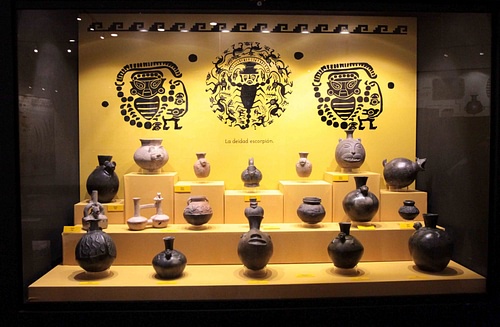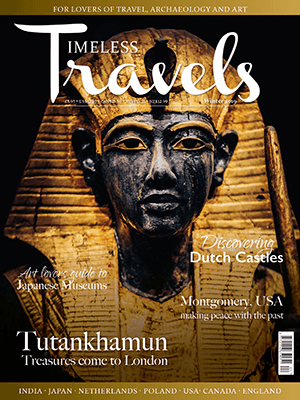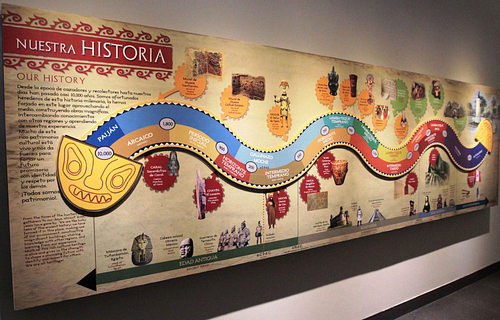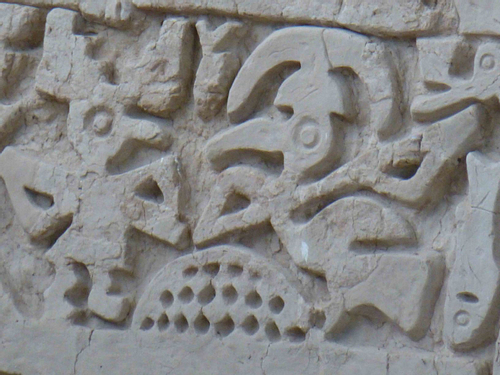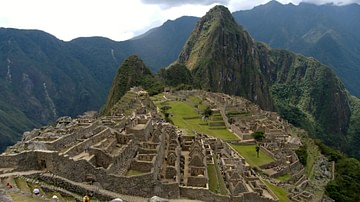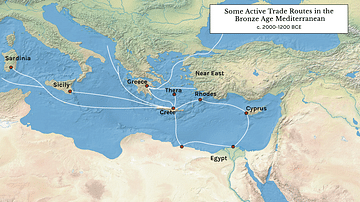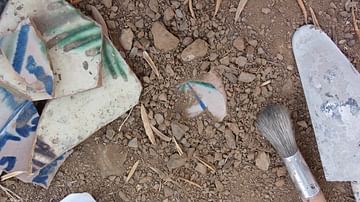On 1 November 2015 CE, at the annual dinner hosted by the British Guild of Travel Writers at the Savoy Hotel in London, it was announced that the Tucume Museum in northern Peru had won the prestigious award for the Best Wider World Tourism Project. Hilary Bradt explains why she nominated Tucume for this award.
It has been a long time – 23 years, in fact – since the Norwegian ethnographer and adventurer Thor Heyerdahl (1914-2002 CE) became fascinated with the potential of excavating the sites of the pre-Inca civilisations in northern Peru and persuaded the Kon-Tiki Museum of Oslo to help launch the project. The excavation was taken over by Peru's Ministry of Culture during the latter years of the project and they are justly proud of the result.
Pre-Inca Pyramids & Ruins
Before the opening of its new museum in September 2014 CE, Tucume was best known for its enormous pyramids, some 26 of them, constructed before the Inca Civilization (c. 1400-1533 CE) made its mark in Peru. They are so huge, and so eroded, that they appear as natural mountains to the uninitiated. But Thor Heyerdahl knew that great wonders lay beneath that rock-hard sandstone and we visitors can, at last, take a look.
The last time I was in northern Peru was in 1973 CE, at the beginning of the 18-month-long backpacking trip which indirectly launched Bradt Travel Guides. Our destination was the Inca ruins in the south and the snow peaks of the Cordillera Blanca, but travelling overland from Ecuador we paused to take a look at Sechín on our way to Huaraz. The extraordinarily graphic representations of battles opened our eyes to the richness of these little-known cultures. In our first guidebook, we wrote:
If you decide to pass through Casma, don't miss the pre-Inca ruins of Sechín. It commemorates a battle. From the pictures on the stone walls, you'll have no difficulty telling the winners from the losers.
Recent studies are less sure about the battle part - maybe these were human sacrifices or even an ancient anatomy lesson. What is clear is that they depict a particularly gruesome dismemberment of human bodies: decapitations, eviscerations, and amputations. They are very old, around 1600 BCE.
Tucume is altogether more gentle – and more recent. The excavations have revealed the most stunning relief carvings of stylised marine animals and birds hidden inside one of the pyramids. Several different cultures come together here, from the Lambayeque and Sipan (c. 750 - c. 1375 CE) to the Chimu (12th-15th centuries CE) and finally the Inca.
This spread has enabled the museum to take visitors on an imaginatively illustrated journey through northern Peru's ancient history. This is a "doing" museum, not just a "looking" one, and there are plenty of interactive exhibits as well as some extraordinary reconstructed burials from the Chimu and Inca periods with their accompanying artefacts. Refreshingly, the labelling is in English as well as Spanish (a rarity in this part of Peru) so you can wander around the museum at your own pace without a guide or translator. There is so much to take in that it is easy to forget the broader picture - to complete the visit you need to see the pyramids.
Huaca Larga & Huaca Las Balsas
The largest and most impressive of these, Huaca Larga (Long Pyramid), the Temple of the Sacred Stone, and Huaca Las Balsas, are found in Tucume's northeast sector. Huaca Larga, at 2,300 feet (700 m) long, is the longest known adobe structure in the world. It is distinctly marked by traditional Chimu red, white, and black paintings of mythological creatures.
Accompanying the desert trail to Huaca Larga is another path that culminates in a fantastically long staircase leading all the way up to Cerro Purgatorio ('Purgatory Hill' - you will appreciate the name once you have climbed it) which overlooks the 26 pyramids and their valley. The view is terrific. A third trail leads down into a lovely carob forest full of colourful birds, sleepy donkeys, and grazing cattle from neighbourhood farms. The trail ends at Huaca Las Balsas, a partially excavated pyramid, which is the jewel in the crown of the museum.
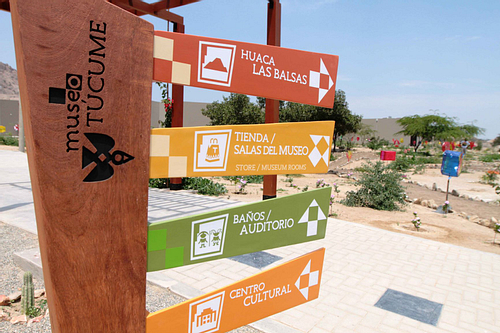
Las Balsas is famous for its carved murals, in perfect condition, which focus on ocean themes, including waves, sea creatures, and marine birds. These can be explored from metal walkways built around the site. A botanical garden, showing the typical dry-zone flora and its accompanying wildlife, completes the picture of the region as a whole. Here we spotted a burrowing owl surveying the scene with a yellow-eyed stare.
The Opening of the Tucume Museum
On opening the museum in September 2014 CE, Peruvian Prime Minister Ana Jara said:
In addition to increasing tourist arrivals in the region, this museum guarantees the cultural, economic and social development of the people of Tucume. It is a source of pride to all Peruvians.
My little group of ten tourists were the only foreign visitors when I visited in June 2015 CE. That is why I nominated the museum for the award. I have visited Peru around 30 times since that first visit in 1973 CE but never made it here. Now, I want to spread the word.
Getting there
The museum is located in Lambayeque province, 33 km north-east of Chiclayo, a large town accessible by air from Lima. Although it is possible to get local buses to the museum, most travellers will prefer to take a tour or taxi to the various sites in the area, the most notable of which is the Royal Tombs Museum displaying the artefacts found at Sipan, Ventarron. This museum is the equal of Tucume in its displays but the labelling is all in Spanish.
